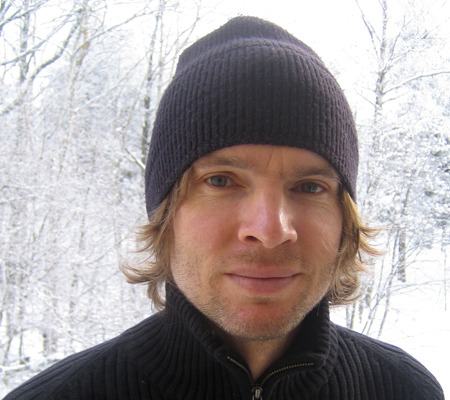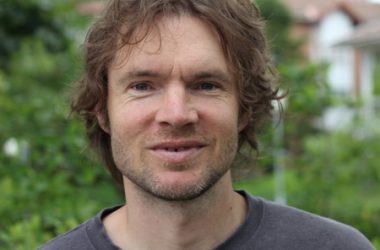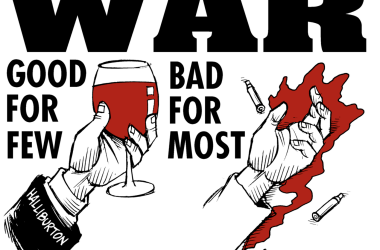The following text was written in response to feedback that Alpine Anarchist Productions (AAP), a collective I’ve been involved with for 20 years, received from members of the Federation of German-Speaking Anarchists (Föderation deutschsprachiger Anarchist*innen, FdA) to their text “Revolution Is More than a Word: 23 Theses on Anarchism” (also accessible on this blog). It was originally published in German in the FdA monthly Gǎi Dào, no. 73 (January 2017).
In nos. 68 and 69, Gǎi Dào reprinted our text “Revolution Is More than a Word: 23 Theses on Anarchism,” originally published on our website www.alpineanarchist.org in the summer of 2016. We much appreciated this, as we did the feedback we have received (directly and indirectly) from members of the Federation of German-Speaking Anarchists (Föderation deutschsprachiger Anarchist*innen, FdA).
Since our text asserts that there is a crisis in anarchist organizing, it is understandable that FdA members ask for clarifications. In many ways, the FdA has contributed to anarchism being better organized in Germany than it has been for a long time. There is also an anarcho-syndicalist organization with the FAU that has grown in recent years. Still, we maintain that there is a crisis in anarchist organizing: establishing an infrastructure with much potential and, on occasion, engaging in actions that receive public attention are preconditions for successful organizing but not the same. What we mean by successful organizing is to organize people who think and act politically in a way that allows them to play a crucial role in social developments and to build foundations on which alternative forms of living can flourish. We want to address six aspects that we deem central for any such endeavor. We don’t know how much these aspects already are discussed in the FdA. As outsiders, it is not our place to assess the internal work of the federation. But we are convinced that these aspects are highly important for any kind of anarchist organizing.
1. Formulating Ideas
As we have written in the “23 Theses,” we oppose the notion that formulating concrete ideas for the kind of society we want to live in contradicts anarchist principles. We often hear that this would inhibit the freedom and openness that the development of anarchist societies requires. For us, however, this is only a rhetorical trick to dodge political responsibility. If we really want people to believe that anarchist values and principles can make their lives better, we need to formulate ideas about the kind of society they’d be able to expect. We are talking about the most elementary of things: Where will our food come from? Who will take care of the sick? Who is going to produce electricity, and how will it get into our homes? How and where do we get clean water from? How do we get from Hamburg to Munich? What happens to our garbage? Who will produce computers and all the other technological devices that we have become so fond of? Who will store nuclear waste? How do we deal with people whose behavior poses a threat to others? How do we teach our children how to read and write? How do we install a social security net for all? How can millions of people affected by a certain decision make this decision democratically? And so on. Why should anyone be interested in anarchist societies, if we don’t have answers to these questions?
2. Communication
We must communicate our ideas and reach out to people outside of our own circles. Depending on the circumstances we find ourselves in, and the means at our disposal, the following activities all can help:
• Info tables are always good for distributing materials and starting conversations with people. So is passing out leaflets. For this to be effective, however, we need to be proactive and go to places where we can actually get in touch with people. Hiding in a corner and looking grumpy doesn’t help. It only leads to frustration.
• We need to get involved in local associations (sports clubs, cultural initiatives), public institutions (youth centers, libraries), and mass organizations (tenants unions, cooperatives), and we need to engage with colleagues at our workplace. Only this allows us to build ties and trust, and to introduce anarchist principles to everyday life. Here, a subtle approach is usually the most rewarding. Anything resembling propaganda or missionizing is doomed to fail.
• Writing letters to newspapers – from local to national ones – is one of the easiest ways to reach broad audiences. The number of questions we can address is endless: they reach from daily politics to perpetual favorites such as traffic, food, and education.
• The (necessary) critique of the oppressive and manipulative character of mass media often leads to the opinion that appearing in them means to betray anarchist principles. This is unfortunate. The media are an essential part of public debate, and if we aren’t present in them we will have no influence on it. Rather than rejecting mass media on principle, we should critically engage with them and organize media training. All media requests and offers must be screened properly, but it is essential to use the media at the right opportunity. This also requires us to establish relevant contacts.
• Publishing has always been an important part of anarchist activism. There is no shortage of it today. The problem is distribution. It is true that distributing anarchist literature meets many obstacles, but we also need to overcome anti-commercial dogmas – and simply make a proper effort.
• Organizing demonstrations and rallies has also long been a mainstay of anarchist activism; the more inviting, colorful, and inspiring the better. Here, too, the number of questions to address is practically endless.
• We need to be visible, and that includes using logos and symbols. No matter how critical we may be of today’s brand culture, logos and symbols have become crucial for being noticed. The problem can be compared to that of a left-wing bookseller who rejects all rules of commercialism: they will not be a bookseller for long. We move and act in capitalism, there is no outside. In order to create one, we have to wind ourselves out of capitalism. That’s the only way to overcome it. Capitalism is no shirt that we can taken off at will. Logos and symbols, representing our ideas and organizations, can be worn as buttons on backpacks, screenprints on banners, and so forth.
• We can help shape public space by the use of posters, stickers, and graffiti. Placement is essential. Where our contributions only annoy people, they won’t be of much use. There are plenty of spaces where art and creativity will be appreciated by pretty much everyone. We need to find them.
• The “web 2.0” and social media offer plenty of opportunities to occupy virtual space. Technophile comrades are encouraged to go crazy on this vast playground: blogs, online forums, even Facebook, Twitter, or Instagram – whatever serves the purpose.
• It is important to organize coordinated campaigns. Locals of anarchist federations should agree on focal topics during certain periods. The topics must appear urgent, both to anarchists and non-anarchists. All of the above-mentioned activities ought to be employed during the campaigns. This will also reinforce their effectiveness.
Essential for all of these activities are clarity, conciseness, and humor. A leaflet that is too complicated, long, or dry, will not be read. A clever poster will draw more intention than a boring one. It is also important to explain innovative concepts, rather than assuming that everyone is familiar with unconventional wording and spelling. This is no argument for populism or opportunism; it is simply recalling basic patterns of human communication.
3. Alliances
Anarchist organizations are marginalized. In order to have wider influence, they need to enter into alliances with other organizations. This also helps to relieve a problem that is otherwise only addressed: the lack of diversity. Most anarchist organizations in the Global North are still characterized by a certain kind of crowd: white, male, heterosexual, and well-educated. The reasons for this are complex and cannot be overcome simply because we’d like more diversity. By entering into alliances with organizations whose makeup is different, our own identities are challenged and we have to prove ourselves as worthy allies. This is of central significance for the future of the anarchist movement.
4. Organizational Structures
None of the above can be achieved by organizations that aren’t functioning. Retreating to the affinity group is no solution. Affinity groups are great for many things, but not as a means to bring about broad social change. Society at large does not consist of only friends. Only organizations who accept this can change society. All people must be able to organize together. Personal sympathies are no requirement to do so; commitment and reliability are. Example: it must be possible to demand explanations from comrades who haven’t done their tasks without being called “authoritarian.” We need normative shifts and a new activist culture – not least if we really want to be perceived as worthy allies.
5. Setting Examples
The ambition of realizing one’s ideals in the here and now (nowadays often described with the fancy term “prefigurative politics”) has been a historical strength of anarchists. This must be maintained and applied to all spheres of life: housing, education, work, leisure, etc. It is true that any attempt to realize anarchist ideals in the here and now comes with compromises, but that doesn’t make the attempt less important or serious. Nothing sends stronger signals than concrete examples. Yet, this is the very reason why our “microcosms of a better world” need to indeed provide a glimpse of it. They must not just serve as isolated retreats but point to alternative ways of organizing society at large; that is, they must be attractive for people whose interests don’t lie with social niches alone. The reproduction of subcultures has great value, but little potential for bringing about broad social change.
6. Preparing for Crises
A special task for anarchist organizations lies in preparing for crises. During crises, the potential for social change is the biggest. Not because people suffer the most (this would be a vulgar interpretation) but because the dominant powers are weakened. It is in such moments that the course of history is decided. If anarchists want to be a factor, they need to have plans for how to act in these moments. If they don’t, they will watch from the sidelines as others seize them – in the worst case, reactionaries. Historical studies can help. Where was the Federation of Communist Anarchists of Germany (Föderation kommunistischer Anarchisten Deutschlands, FKAD) during the uprisings in the Weimar Republic? It would be wonderful to, one day, see in Germany – and elsewhere – anarchist federations with more clout.
Alpine Anarchist Productions (AAP)
(December 2016)
For information on Gabriel’s work with PM Press, see his author page.
More blogs from Gabriel | Back to Gabriel Kuhn’s Author Page






